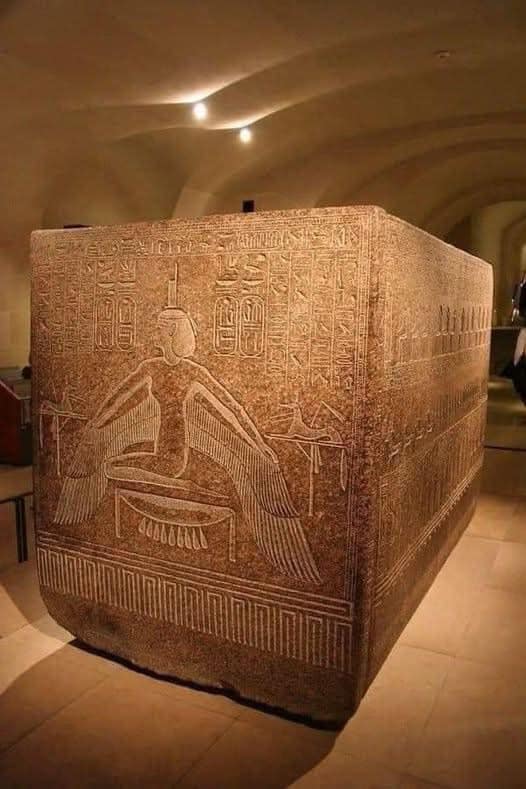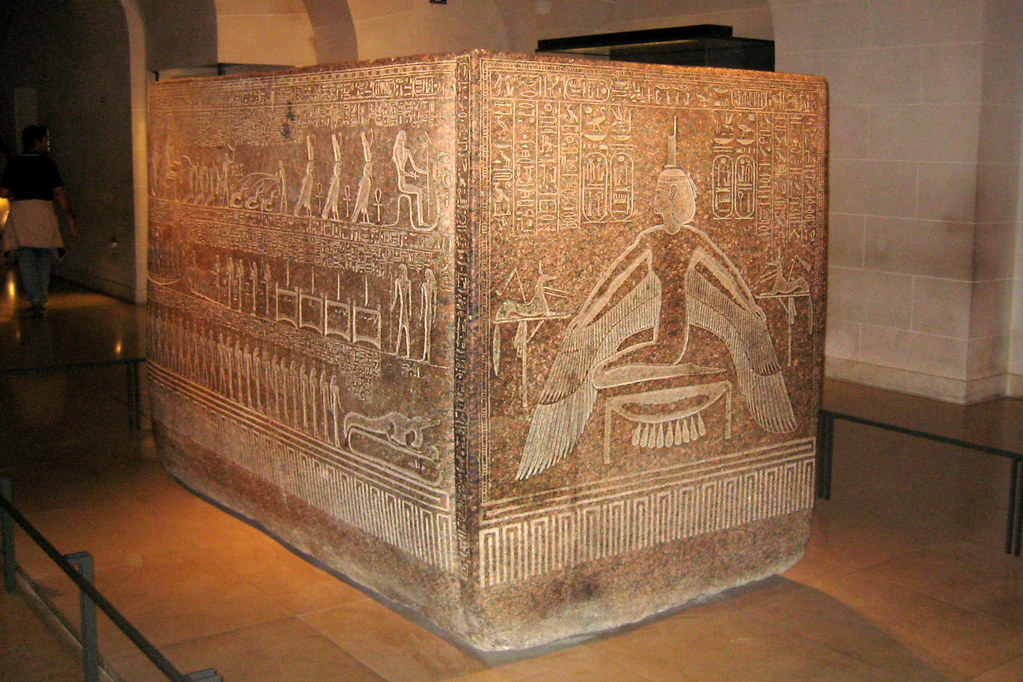

This pink granite cartouche-shaped box once contained the nest of coffins of Pharaoh Ramesses III. The lid is now in the Fitzwilliam Museum in Cambridge. Usimare Ramesses III (also written Ramses and Rameses) was the second Pharaoh of the Twentieth Dynasty and is considered to be the last great New Kingdom king to wield any substantial authority over Egypt. The son of Setnakht and Queen Tiy-merenese, Ramesses III is believed to have reigned from March 1184 to April 1153 BC.
The decoration of this monolithic cartouche-shaped block is organized around the large winged figure of Isis at the feet of the deceased (on the flat front of the sarcophagus) and that of Nephthys at his head (on the rounded back of the box). Both long sides are engraved with scenes taken from the “Book of Hidden Chambers” (the Amduat). The decoration begins near the figure of Nephthys at the king’s head, with the seventh hour of the Amduat along the right side (looking from the head to the feet), and continues with the eighth hour along the left side. Around the base of the coffin is the palace façade motif – a relic of Old Kingdom sarcophagi (cf. sarcophagus of Abu Roach, Room 14). The inside of the box features large figures of deities from the first hour of the “Book of Gates.”
The Egyptians imagined the sun to travel underground in a boat during the twelve hours of night. The nocturnal sun was represented as a man with a ram’s head. Every “hour” (i.e. every stage of his journey) was marked by a particular event: at the seventh hour, for example (right-hand side of the coffin), the sun confronts the snake Apophis, the “evil serpent” of Egyptian texts, who tries to stop him on his course. The sun-god is portrayed armed with knives to destroy him. The left-hand side represents the eighth hour: on the lower register, the creatures of the Underworld are depicted, sitting on the ideogram for fabric (one of the essential funerary offerings). The texts referring to the sun’s night-time journey (“Litanies of the Sun”, “Amduat”, “Book of Gates”, “Book of Night”, etc.) were composed during the New Kingdom for the exclusive use of the king. As the pharaoh was ᴀssociated with the sun god and his perilous journey through the night, the royal tomb featured representations of this recurrent event. After the New Kingdom, some of these texts (especially the Amduat) were also used for the benefit of priests and soldiers who were at the peak of their influence at that time (see the papyri in vitrine 4).
Only two scenes from the Amduat are illustrated on the sarcophagus of Ramesses III, which is characterized by extraordinary carelessness on the part of the scribe who engraved the introductory text to the seventh hour (to the right of the figure of Nephthys). The phrases (and even individual words) are cut up into incoherent elements that cannot be understood without referring to the correct version featured in other tombs. This poor reproduction, without subsequent checking, suggests that, in the late New Kingdom, the monarchy was no longer treated with the respect it had once inspired.



